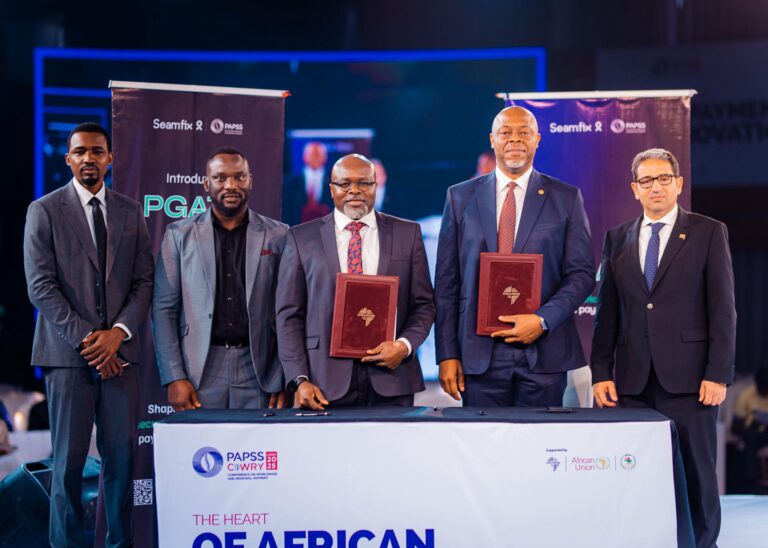Building a startup is challenging. Just ask the founders of Seamfix, who went from bootstrapped beginnings with less than a hundred dollars in Lagos, Nigeria, to a global company without any external funding,
This is precisely what I was about to explore as I eagerly joined a Zoom call, ready for a candid conversation with Chibuzor Onwurah, the co-founder of Seamfix. I wanted to glean his firsthand insights on launching and scaling a zero-funded startup in Africa.
My first question was straightforward: “What led to the birth of Seamfix? What inspired you, and how did your vision align with tech’s unique challenges and opportunities?”
Chibuzor’s candid response set the stage for an engaging discussion. “Well,” he began with a touch of humour, “I’d love to say we dreamt of launching a spaceship to transport Africans to Mars, but our journey was quite different.”
This guide is the story of Seamfix, filled with invaluable insights to help you start and scale your startup.

Vision and Values: Tech for Equality
“We saw opportunities to improve our lives, much like in more developed countries,” Chibuzor expressed frustration. “Our dissatisfaction inspired our desire for change.”
With technical skills and a genuine desire for positive change, Chibuzor and his lifelong friend, Chimezie Emewulu, began a mission to deploy technology to address these challenges. They operated by three core principles: “Identity is a right, not a privilege,” “Equal opportunities for everyone,” and “Solving problems seamlessly with technology.”
“Let me share a personal experience,” Chibuzor revealed. “After scoring among the highest in my common entrance exam in Lagos State, my name mysteriously vanished from the King’s College admission list. It reappeared many months later after numerous complaints. Later, in my university years, I secured a federal government scholarship, but it was short-lived. I received a single payment, and the rest vanished. Meanwhile, individuals from other parts of the country received multiple payments.”
Reflecting on these experiences showed that only some have equal access to opportunities. It became the heart of their mission—to use technology to dismantle these barriers and create fairer access for all.
In our virtual meeting, a vision was emerging that united Seamfix, inclusivity, and the power of technology for positive change.
Learning the Ropes: Overcoming Entrepreneurial Obstacles
“One key to our success was beginning at a young age,” Chibuzor pointed out. “When you’re young, you’re bold and fearless. You don’t see obstacles; you see opportunities.
His confidence was rooted in experiences at Uhere, an academy where he honed led coding skills. I led a project during a brief internship, managing it from inception to completion, handling everything from software development to customer support. Meanwhile, Chimezie explored sales while being an engineer.
These experiences honed our technical skills, a vital prerequisite for launching a startup. However, challenges surfaced rapidly, starting with the primary obstacle: capital. We launched Seamfix with just 75,000 Naira in savings.
Funds quickly dwindled, pushing us to be resourceful. There were days when we pooled our resources, limited ourselves to one or two meals, and shared a pack of noodles as our daily sustenance.
Chimezie, my co-founder, even became a honey vendor during breaks in our coding sessions while I supplied computers to my father’s friends and office. These practical, if unconventional, measures were essential for survival.
As their business expanded, new challenges emerged—hiring the right talent, deciding when to scale, and establishing the necessary structure, systems, and processes. The transition from two people in a room to a structured business presented its unique hurdles, illustrating the entrepreneurial journey in Africa—a journey marked by scars of adaptation, hard work, and resilience.
“With the right mindset, anyone can thrive as an entrepreneur,” Chibuzor affirmed. “Your hunger for the ultimate goal and the humility to learn quickly enough to avoid failure drive your persistence.”
Customer-Centric Success: Finding Product-Market Fit
The burning question central to every startup’s success: How do you find the elusive product-market fit?
Chibuzor was candid, “We stumbled upon what works over time. If there’s one piece of advice I’d give, it’s to listen to the market, listen to your customers.”
Their initial project involved creating online portals for educational institutions. However, they altered their course based on customer feedback. Attuned to their customers’ frustrations, they unearthed a pivotal issue: identity verification during university admissions. Using biometrics, they devised a solution to ensure that exam applicants were the same individuals who attended and gained admission.
When the SIM registration process in Nigeria became popular, it was once again a customer’s plea for assistance that prompted Seamfix to pivot and address a new problem. This pattern persisted with each growth phase, driven by their comprehension of customer issues and the evolution of their product offerings.
You might commence your journey with an idea as your driving force. Nevertheless, the true essence of a business emerges when you present it to the customer and actively heed their feedback. While customisation may suit a few major clients, scalability necessitates the ability to grasp and address the collective demands of the market.
“In essence,” Chibuzor concluded, “it all begins with the customer.”
Building a Stellar Team: Culture, Qualities, and Growth
As our conversation neared its conclusion, Chibuzor shared Seamfix’s recipe for success: talent acquisition and team building. He emphasised that culture isn’t confined to written documents; it’s a living entity that reflects a company’s leadership.
“When we launched, we embodied a hunger for success, humility, and intelligence. These are the qualities we seek when we bring new team members on board.”
Chibuzor shared a remarkable anecdote about an interviewee who exemplified these qualities. The candidate boldly stated, “I’m just 24 hours away from learning how to do anything.” This individual would later become a leading AI engineer at Google.
Central to their recruitment strategy, Seamfix takes a distinctive approach to growth by nurturing talent from within and instilling their culture in new hires. Many of their leaders, like COO Frank Atube, began their careers at Seamfix, reaping the benefits of internal development. Over the years, hundreds have benefitted from Seamfix’s mentorship, gaining essential skills and contributing to the company’s success.
Recognising their role as a core technology company, the founding team invested significantly in research and development (R&D). This focus allowed them to create many of their biometric capabilities in-house, providing a distinct advantage in the market. Chibuzor also applied his learnings from Stanford, where he acquired the expertise to extract value and finance a business throughout the value chain.
Seamfix meticulously evaluated its relationships with vendors, devised strategies to encourage prompt customer payments, and refined its contract structures. The result was a significant improvement in cash flow and profitability, underlining the importance of a holistic approach to innovation across all aspects of a business.
Enabling Trust: Impacting Africa through Startups
As Seamfix’s solutions promote trust and transparency by ensuring clear digital identities in personal and business transactions, Chibuzor advises aspiring entrepreneurs to identify their areas of influence and recognise how their work can add value. Whether they work in payments, agriculture, healthcare, or any other field, he recommends that they gauge their impact in alignment with their broader vision.”
“Start with your immediate sphere, Nigeria or any other African country. Define your big vision and how you plan to contribute. Be clear about what you can do now to make a difference. As you track and measure your progress, you’ll become more creative in finding innovative solutions. It’s an ongoing journey.”




